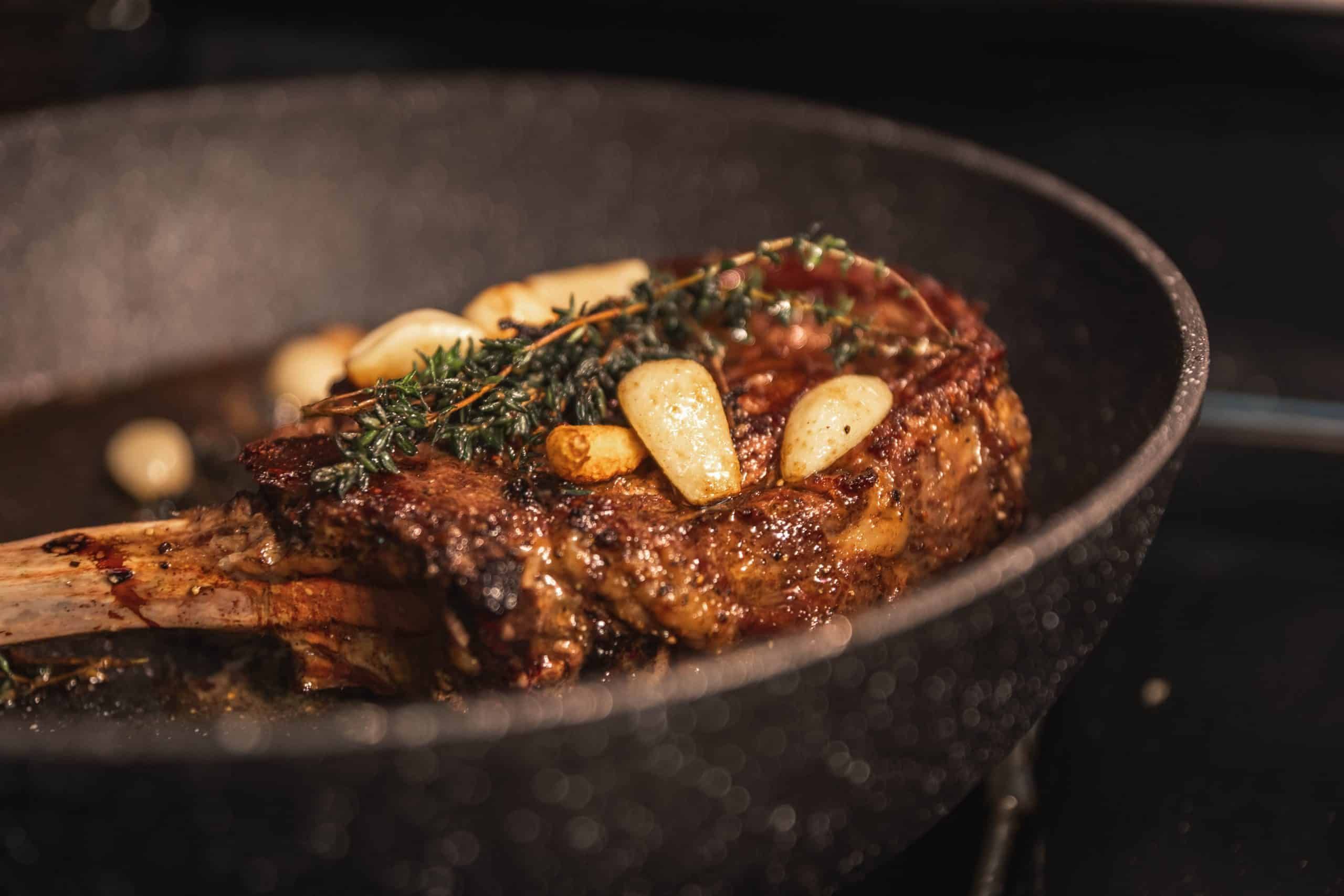
Tomahawk Steak recipe | Photo by patrick le on Unsplash
Now synonymous with luxury, beef steak has been enjoyed for centuries, with so many different cuts offered, which vary around the world due to different butchering techniques. While still popular, so many people struggle to cook steak properly, or to a good quality, at least. Countless chefs have shared a selection of tips and techniques, yet every recipe will be different. Regardless of all criteria, there are a few essential steps for a perfect steak recipe. This tomahawk steak recipe shares and follows all of the tips and tricks needed to get it right every time.
In the UK, sirloin, rump, fillet, and rib-eye are the most popular steak cuts, though some less well-known cuts such as flat iron, bavette, and skirt have started to become more popular over the past five years or so – now available in most British supermarkets. While all cuts have their place, each particularly suitable for different dishes or occasions, rib-eye is arguably the most flavoursome of the main four. With high fat content, the rib-eye steak is significantly more flavoursome than exceptionally lean fillet. It’s also one of the more difficult to cook perfectly. The reason that so many will opt for a fillet isn’t necessarily based on a complete lack of taste, although so many do still believe that expense equates to quality; instead, they’ve probably had a bad experience with poorly rendered fat, which can be off putting. Fillet is thus a safer bet, but at the cost of flavour.
To cook a rib-eye perfectly, it’s important that the fat is rendered properly without overcooking the steak. Bone-in tomahawk steak is arguably easier to cook, as well as being an impressive dish to serve for a date night or at dinner parties (providing everyone likes their beef cooked to the same degree). Tomahawk steak is generally considered a more expensive option, seldom costing under £20 per kilogram (or considerably more depending on butcher, breed, or location), but with meal kits having become so popular since restaurants were first forced to close, an indulgent dinner that provides change from £30 seems fairly reasonable.
There’s also something satisfyingly primitive about cooking a large hunk of meat, and the tomahawk steak fittingly takes its nickname from the axe it resembles – also known as a cowboy steak, cote de boeuf, or simply bone-in ribeye. Although steaks are best cooked over an open fire or on the barbecue, it’s not an ideal method for everyday cooking. A perfect steak can be achieved indoors, however, following a number of crucial methods.
While a tomahawk steak will take considerably longer to cook than smaller cuts, a screaming hot pan (or BBQ) is an absolute essential for any steak, regardless of whether it’s cooked entirely in the pan/on the BBQ, finished in the oven, or even reverse-seared. Cast iron or stainless steel pans are best for this. (Personally, I like to use a pan without non-stick coating, to help the steak take on a better crust). If you’re cooking more than one steak, it’s also crucial to avoid overcrowding the pan, cooking no more than two steaks in a big pan – although it’s best to cook just one in each pan.
Bringing the meat up to room temperature, taking it out of the fridge at least 30 minutes before cooking will also help the meat to cook more evenly, while seasoning with salt beforehand helps to retain moisture towards later on in the cooking process.
Basting with butter will also dramatically improve the flavour and texture. Herbs and garlic aren’t strictly necessary, but they infuse the butter and provide an easy way of enhancing the overall flavour.
Internal temperature is also crucial when cooking steak. A number of methods can be used to test how well-cooked the meat is without cutting or probing, but it’s worth investing in an instant-read thermometer. Anywhere between 130-135F (medium-rare) is ideal for a perfect tomahawk steak. Other levels of done-ness are as follows: rare 120-130F, medium rare 130-135F, medium 134-145F, medium-well 145-155F, well-done 155F and above.
Resting is also important, with 15 minutes or so best for a tomahawk. Don’t worry, the beef will not become cold. I’d also suggest seasoning with pepper at this stage, as pepper can easily burn in the pan and become bitter.
Once rested, carve your steak into finger-width slices or serve whole, accompanied by sides and a sauce of your choice – keep things simple or serve with extravagant steakhouse sides. I like to make a simple red wine and shallot sauce to pour over tomahawk steak, served with some tender stem broccoli and a simple potato dish, allowing the steak to really stand out.